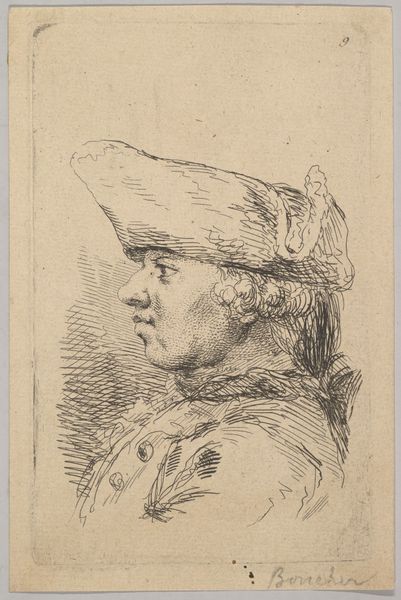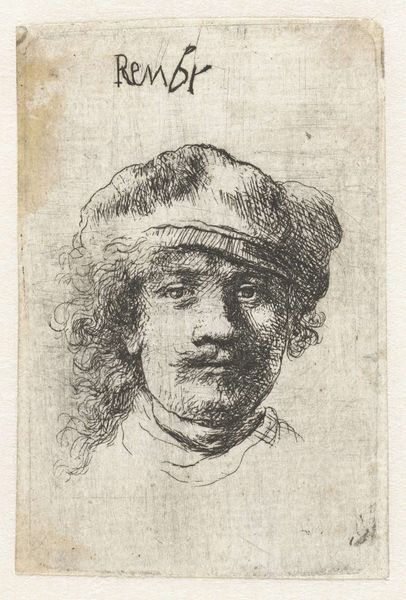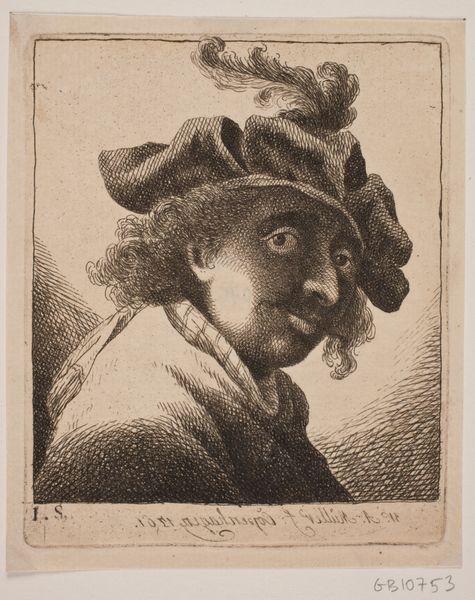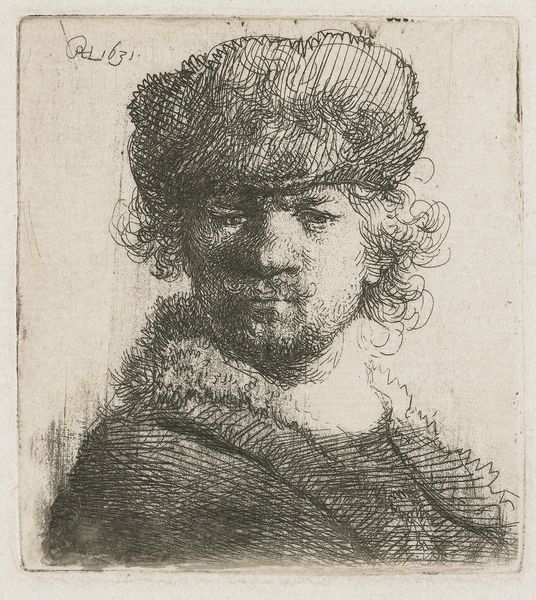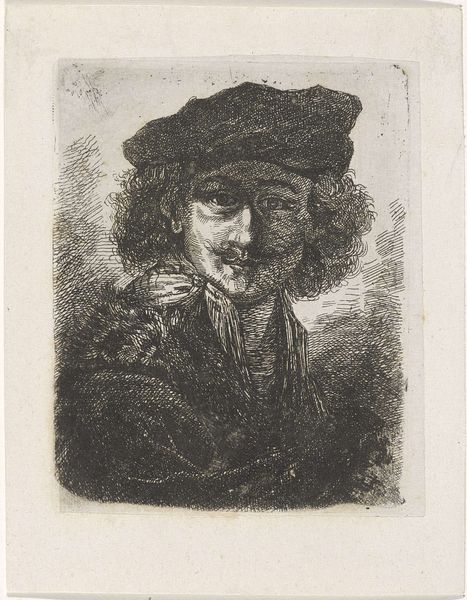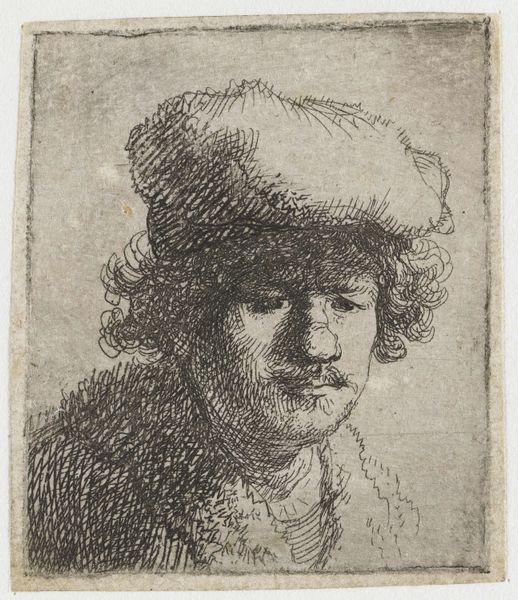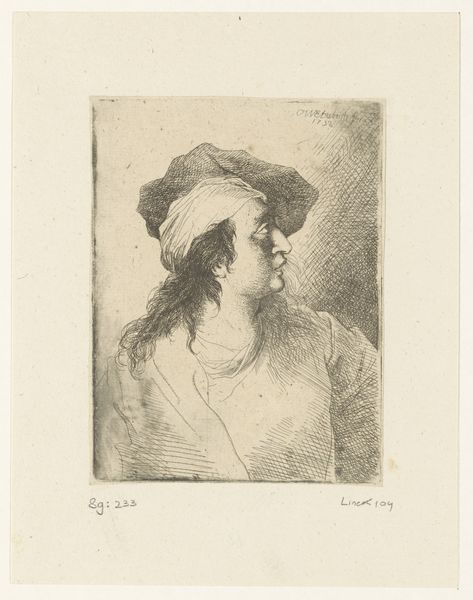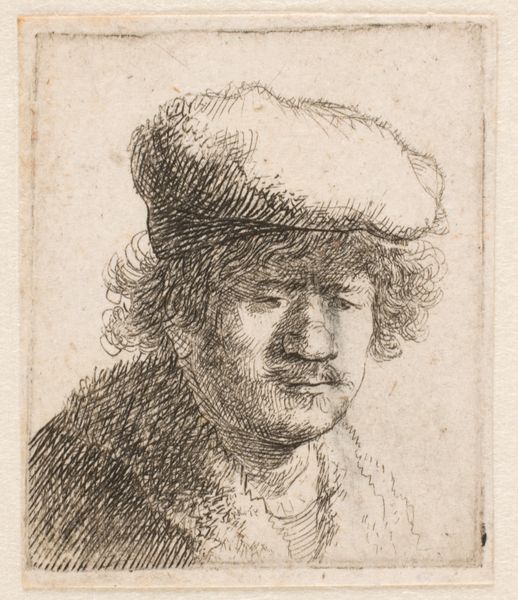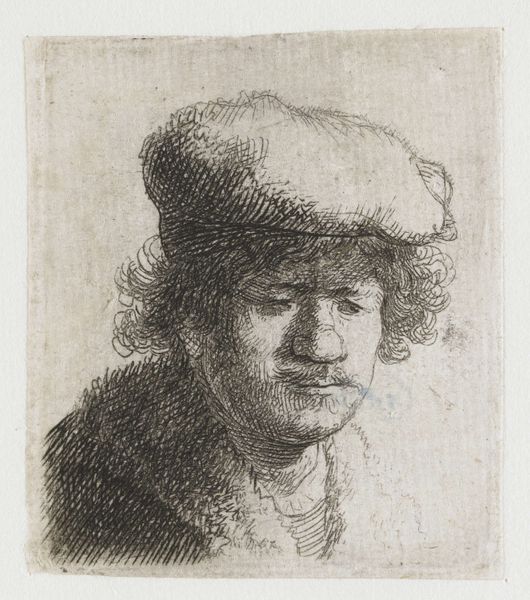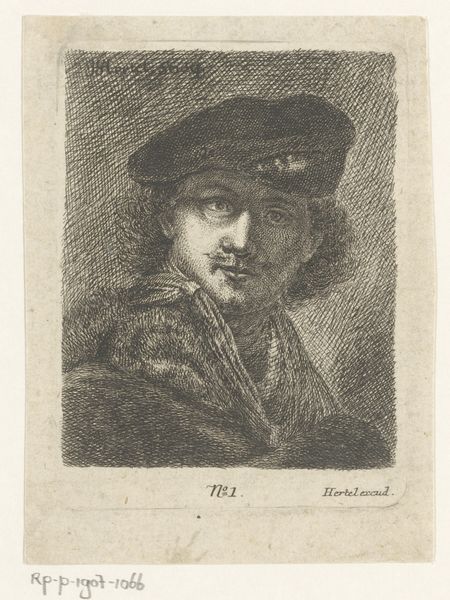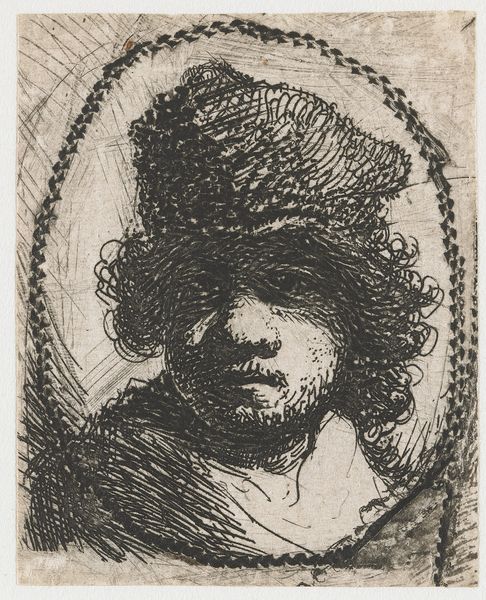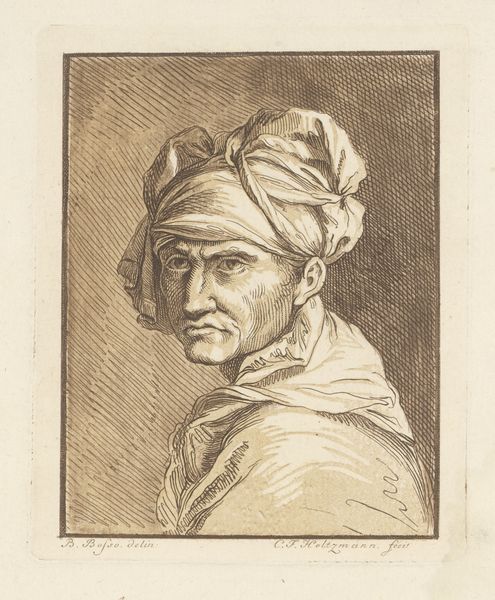
print, etching, engraving
#
portrait
#
neoclacissism
# print
#
etching
#
engraving
Dimensions: height 115 mm, width 77 mm
Copyright: Rijks Museum: Open Domain
Curator: Look at the almost melancholic air of this portrait. Editor: Yes, and notice the incredible line work! This print, tentatively titled "Portret van jongeman (waarschijnlijk zelfportret)," or "Portrait of a Young Man (Probably a Self-Portrait)," comes to us from the hand of Joseph Fischer around 1795. It's an etching and engraving, both labor-intensive printmaking techniques. The marks he makes describe form economically, but they also accumulate and darken into shadow to communicate volume. Curator: The face itself possesses an introspective mood, typical of portraits in the Neoclassical era, as the emphasis moves from idealized form towards revealing a sort of personal sentiment. It's more psychologically probing than previous styles. What do you make of the turban? Editor: It does add a striking, exotic touch. Consider how different fabrics evoke different tactile experiences—the soft, almost collapsing folds versus the tauter wrap of fabric. Curator: It hints, perhaps, at an interest in the “Orient” during this period. What does it signify? Adventure? Worldliness? Perhaps an aspiration? Remember this image emerged in the Age of Revolution; older ideas were overturned and older symbolism was in need of updating, even if those revisions felt awkward. Editor: An awkwardness that's enhanced, for me, by the awareness of the artist’s labor. Every single one of those etched lines—each demanded deliberate effort and careful handling of materials! Thinking about how that physical process shapes what the image conveys, from cultural symbols, makes me think of art production not as just "artwork" but material expressions rooted in time and space. Curator: Well put. Fischer uses established iconographic approaches, but the work feels distinctly modern precisely because of its more nuanced and unsettled emotion, expressed in its Neoclassical features. He inherits old tropes, even the idea of portraiture, but he filters them in compelling new ways. Editor: The more I contemplate its place in that trajectory of printmaking history, the more deeply I appreciate its complexities. Curator: Indeed, by examining this print, we find connections to prevailing ideals while witnessing a glimpse into the shifting cultural landscape, still recognizable after more than two centuries.
Comments
No comments
Be the first to comment and join the conversation on the ultimate creative platform.
